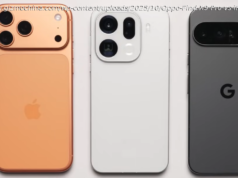A pricey powerhouse with a robust ecosystem of accessories and exceptional accuracy, the Formlabs Form 4 is an excellent 3D printer for light-duty manufacturing.
The Formlabs Form 4 is the latest professional-grade resin 3D printer from the Massachusetts-based manufacturer. Starting at $3,499, it’s far above the budget of most hobbyists, and the tested configuration with the Form Wash and Form Cure stations pushes the total price to nearly $7,000. But you get a lot for the money: This package delivers an end-to-end workflow solution designed to move from CAD model to finished, production-ready part with minimal tinkering. The Form 4 is best suited for professionals, engineers, and entrepreneurs who value speed, reliability, and accuracy. Hobbyists, especially those who don’t want to be locked into the proprietary and pricey Formlabs resin system, should instead look to the much cheaper (but less accurate) Anycubic Photon Mono M7 Max, our Editors‘ Choice pick for resin 3D printers. Features and Setup: It’s Not a Printer, It’s an Ecosystem
I first came across Formlabs as a young engineer looking for ways to speed up my company’s fabrication process. Back then, our shop was filled with machinists cutting billets of aluminum on CNC and milling machines, slowly carving CAD drawings into finished parts. Then I read about a small company that had built a resin printer capable of producing engineering-grade components in hours, strong enough that the US Army was mounting them directly onto tanks. I begged my boss to buy one, only to be told it was too expensive—a decision wrapped in excuses and half-hearted listening.
That machine was the Formlabs Form 1, a printer that turned heads and set imaginations racing with the possibilities of UV-cured resin and lasers. My company never adopted it, and eventually was sold off, unable to compete with its more nimble competitors. Looking back, I can’t help but wonder if things might have turned out differently had it taken a chance on that first Formlabs machine.
Now, nearly 20 years later, the Form 4 has the same characteristic orange glow and iconic branding of the Form 1, but it’s laden with 2025 technology. There are a lot of improvements over the last-generation Form 3+, not to mention the Form 1. It’s a whole new machine in many respects. In fact, most prospective Form 4 owners should really consider the Form 4 (shown below at center) as just one component in an ecosystem that also includes the curing station (shown at left) and washing station.
When you get a shipment from Formlabs, you get a shipment. Aside from the three boxes for the printer, the Form Cure curing station, and the Form Wash wash station, the shipment included many other boxes containing the resin, the individual resin trays and wipers, and a finishing kit with sanders and Dremel grinders. My wife raised an eyebrow at me with increasing consternation at the arrival of the rapidly rising cardboard skyline in our foyer. It’s a lot of boxes. Be sure to tip your UPS driver.
As I do for most 3D printers I test, I wanted to see how quickly I could set up the Form 4 and print the first object—in this case, a GPS holder for my Toyota Land Cruiser. I decided to use transparent resin, which I thought would look cool on the dashboard, and got started.
I quickly discovered that the Form 4 is the fastest, simplest resin printer from box to print that I’ve ever used. It has fully automated leveling and calibration—simply snap in the resin cartridge and build platform, then start printing. At no point in the process are you likely to make a mistake. I put the resin cartridge in the back, which slides in and exposes a valve on the bottom of the canister. You can see through a viewfinder which resin you’re using for fast visual confirmation. Cartridges automatically dispense resin into the tank, with RFID chips tracking resin type, volume, and expiration date—no manual pouring, less mess.
I chose the 0.1mm layer option in the PreForm slicer software, and a few hours later, I was holding this in my hands:
My Garmin InReach Mini slid perfectly into the sleeve of the print. I was a little surprised at how well it fit – with prints like these using other resin printers (including the M7 Max), I often need to scale up parts that I had downloaded to work in the real world or fine-tune for the resin I’m using.
I was honestly a little excited when this first print came out. I walked (really quickly) out to the truck and installed it. I didn’t polish the resin or apply any type of secondary clear coats, but I could see through the walls easily enough to see every detail of the unit on the inside. And I couldn’t get over how quickly it finished printing, either. Thanks to Formlabs’ new Low Force Display (LFD) light engine, the Form 4 achieves speeds up to 3.94 inches (100 mm) per hour, making it one of the fastest resin printers available in its class.
One of the many boxes I received contained examples of every type of resin Formlabs supplies for its printers. I was overwhelmed by the number of resins the company makes (in the US, no less) for all manner of applications. Even more remarkable is that a printer setting exists for each of these resins, pre-tuned to produce high-quality prints.
I was especially looking forward to using the specialty Grey Resin and Tough Resin, and set about on my printing journey.
I started small (remembering that this printer has a 4K LCD), printing a tiny rook first and then a larger standard-size rook.
Up close, the tiny rook (I’d forgotten to scale it) was as precise as you’d expect, with no errors in the print.
Inside the larger rook, the staircase and detailed “DNA” chain printed perfectly with this Tough resin.
I then printed the Ameralabs test print we use for all resin printers (a model of a city), with good (but not great) results. Some of the details of this print actually show up more prominently on consumer-grade units like the M7 Max.
Up close, I saw the smallest of the protrusions had issues with their exposures, compared with the same print made on the Proton M7 Max (shown at right in the photo below).
I wondered how these missing details would translate to figurine printing, something this machine admittedly isn’t designed for. As it turned out, my retired neighbor, who is an avid baker, was making a theme cake for her grandson’s birthday on one of the days I was testing the Form 4. She texted me and wanted to know if I could make her a wizard, and a dragon to go along with the castle cake she had made. (I’m not kidding about the coincidental timing of all this.) I shot out the prints, and the results were actually much better than the Ameralabs output. I couldn’t fault the Form 4 with these real-world figurines:
I printed these at the 0.1mm level, with automatically generated supports from the PreForm software. They finished printing in a few hours. The Form 4 offers 50-micrometer XY resolution with excellent edge sharpness and smooth surface finishes, which makes it ideal for dental and prototyping applications.Software: An Intuitive Slicer
I find the Formlabs PreForm slicing software to be the most intuitive slicer I’ve ever used. It provides powerful automation (automatic orientation, support generation, fleet management, and remote monitoring), which makes it easy for you to get a print loaded and sent to the printer (the Form 4 has Wi-Fi, Ethernet, and USB connectivity), confident that the part is oriented and supported correctly.
It’s easier and simpler, in fact, than the PrusaSlicer, which I think is almost too simple. Because Formlabs pre-tunes the slicer with its selection of resins, you don’t have many settings to tweak. You simply choose the layer height you want (0.1mm, 0.050mm, or 0.025mm, in most cases). You can then choose the one-click option in the upper left corner, and the slicer will automatically position and support your model, which I found to be the way I would have manually positioned and supported myself most of the time.Print Quality: Impressive Detail
After I printed the cake decorations, I set about making the rest of our standard test prints. The output continued to impress, as shown by this Geometry Detail Test from Thingiverse:
I then ran an exposure test print and found no loss in detail from the largest to the smallest towers and holes in the print.






